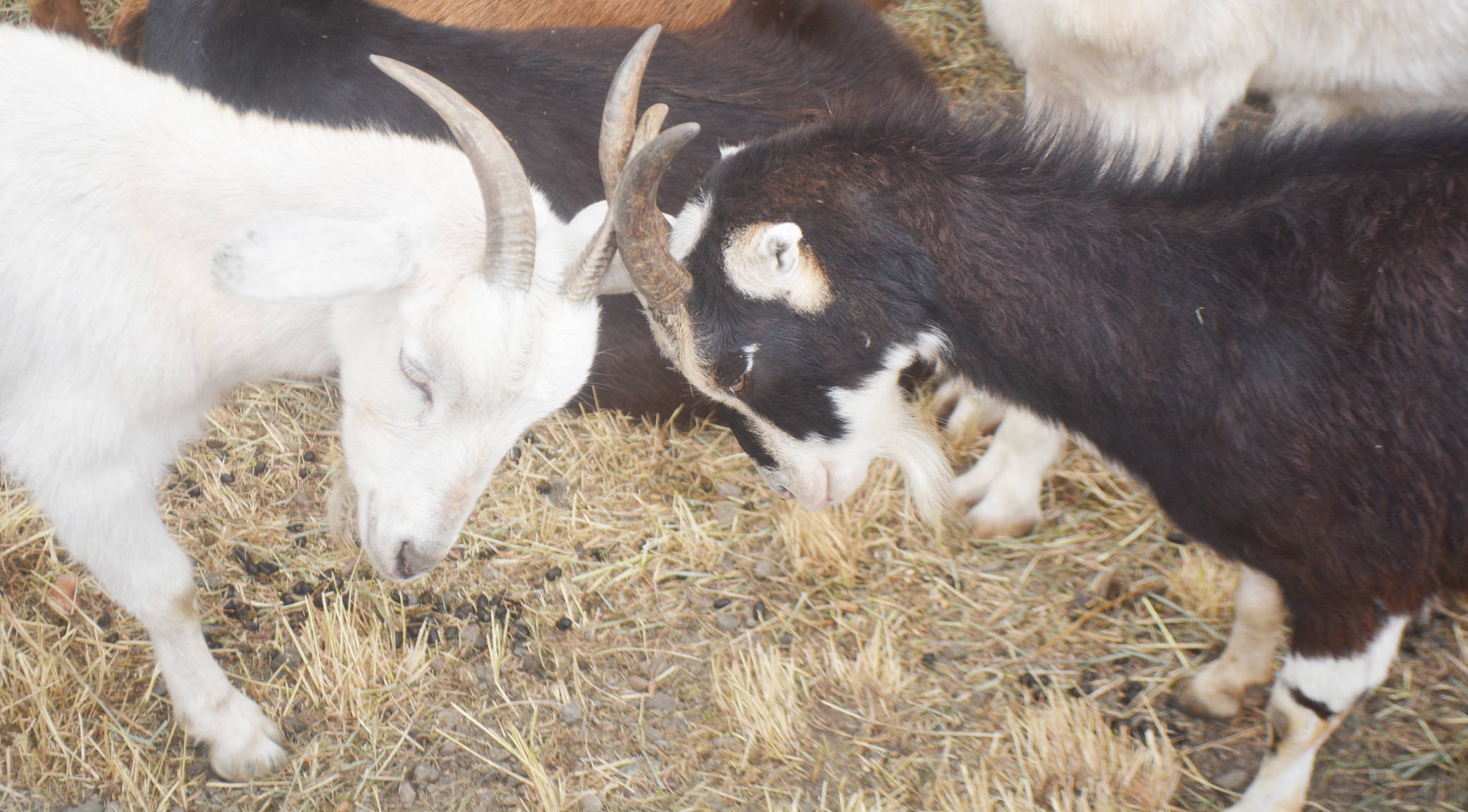Bainbridge Island isn’t sheepish about using goats to clear the trail for future transportation.
About 100 goats recently cleared out vegetation for work to begin on the next section of the Sound To Olympics trail from High School Road to Sakai Park. The trail already runs from the ferry terminal to that spot along Highway 305.
“It’s an important part of our future sustainable transporation system; the nonmotorized spine that runs north and south between Winslow and Agate Pass Bridge,” said Mark Epstein, project engineer for the city.
Barb Trafton, project director for BI Parks Foundation, said they used donations to pay for the goats for six days to clear the trail in an eco-friendly way. They also used them to attract attention to the project. Goats have previously been used for vegetation control in Blakely Harbor and Fort Ward parks.
The city will start construction of what is being called the STO Sakai Pond Connector the first week of June, using more-traditional earth-moving equipment. The paved, 10-foot-wide shared-use trail will be the STO Trail’s first segment on BI since the 1.1 mile Winslow Connector opened in 2018 between Winslow Way and High School Road.
The new section is just 400-feet long and will narrow to 6-feet wide with gravel when connected with BI parks district trails already in Sakai Park.
Epstein said the city learned a lot when it put in the first STO section. Like it needs to communicate with the public better on what’s going on. That was one of the reasons for bringing the goats in. “They attracted attention,” he said.
The city also learned to save as many trees as possible. Epstein said that’s one of the reasons the trail is going into Sakai Park instead of staying along the highway.
“We want to be more transparent and save as many large trees as we could,” he said, adding 32 smaller trees will be removed, but 192 trees and 180 native shrubs will be planted. “We want to create a better functioning ecosystem than what was there before,” he said.
Epstein said the benefits of a nonmotorized transporation system in the long term taking cars off the road far outweigh any environmental impacts now.
In the long, long term, the idea is for the trail is to not go just the seven miles to the bridge. It eventually would connect to the STO regional trail crossing Kitsap County and connect with the Olympic Discovery Trail beyond the Hood Canal Bridge. Right now that trail runs from LaPush on the coast to Port Townsend.
Trafton said it also would connect to the east at some point all the way to Washington, D.C. “It’s cool for Bainbridge to be part of a national trail,” she said.
Trafton said the parks foundation got involved because the city has limited funds for vegetation planting and management. To restore native plants along the corridor more money was needed.
The foundation also helped remove failing plants in the first STO section and provided benches. The last part of that project for them will be to add little shelters above the benches this summer.
“We want to bring it to a higher level than what the city has funding for,” Trafton said. “We want to fix it up and make it more parklike.”
She likes that this new section is going into Sakai Park, which isn’t well-used, she said. She also liked using the goats to clear vegetation.
“It was less expensive than heavy equipment, and so much more fun,” she said.
As for the future of the trail, Epstein said it probably will stay along Highway 305 north because it would be less expensive to build on land that is already public. The terrain also is already is in place. That would also limit the removal of trees.
The STO trail is wide to accommodate all types of nonmotorized use and safer than riding on the road for bicyclists. Rather than using city funds grant money would be a possibility.
Speaking of costs, the city chipped in $269,000, and Visconsi Co. paid $155,000 to mitigate its Wintergreen Walk project on the other side of Highway 305.
For details go to www.biparksfoundation.org/sto or www.bainbridgewa.gov/1293



